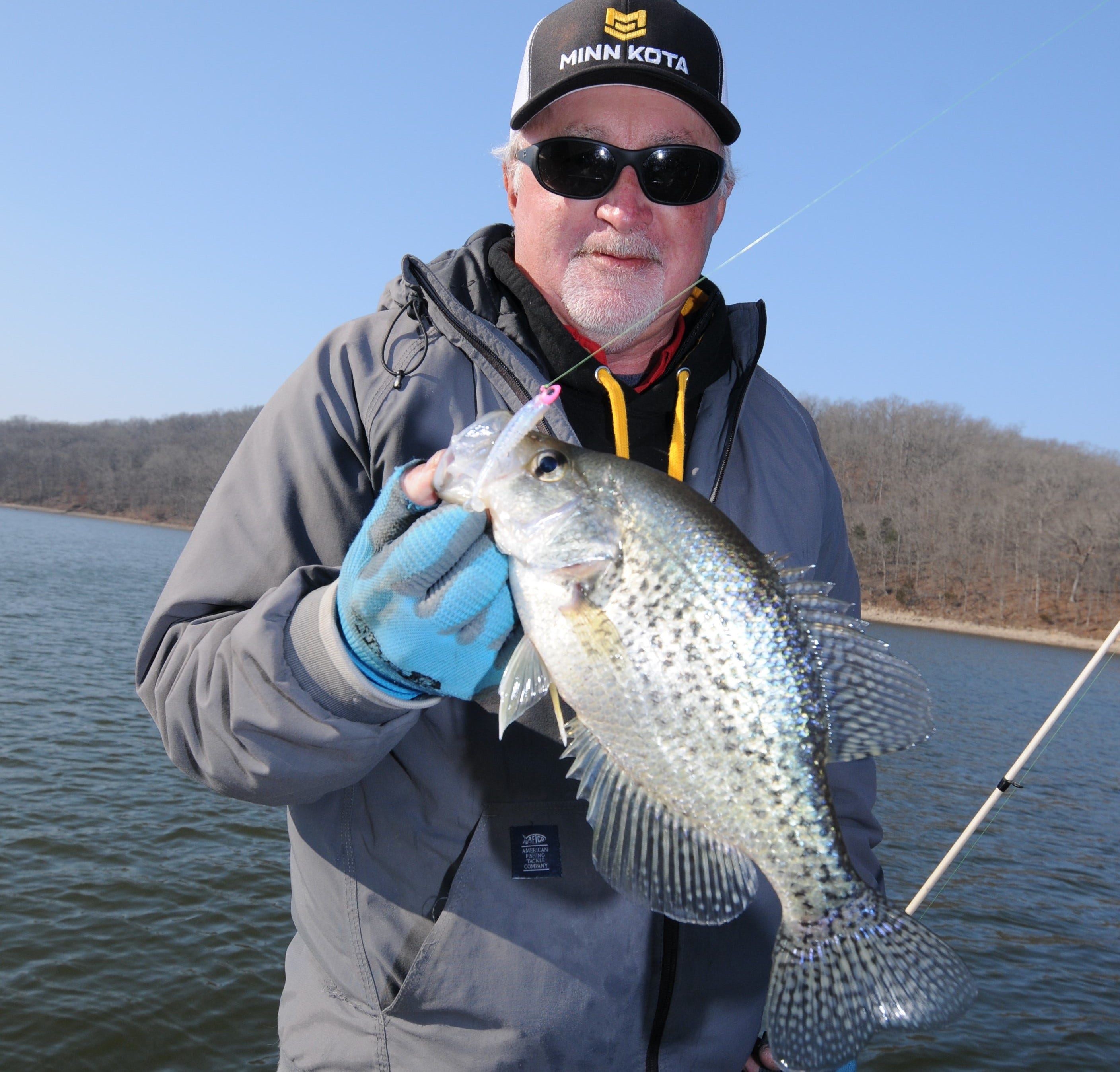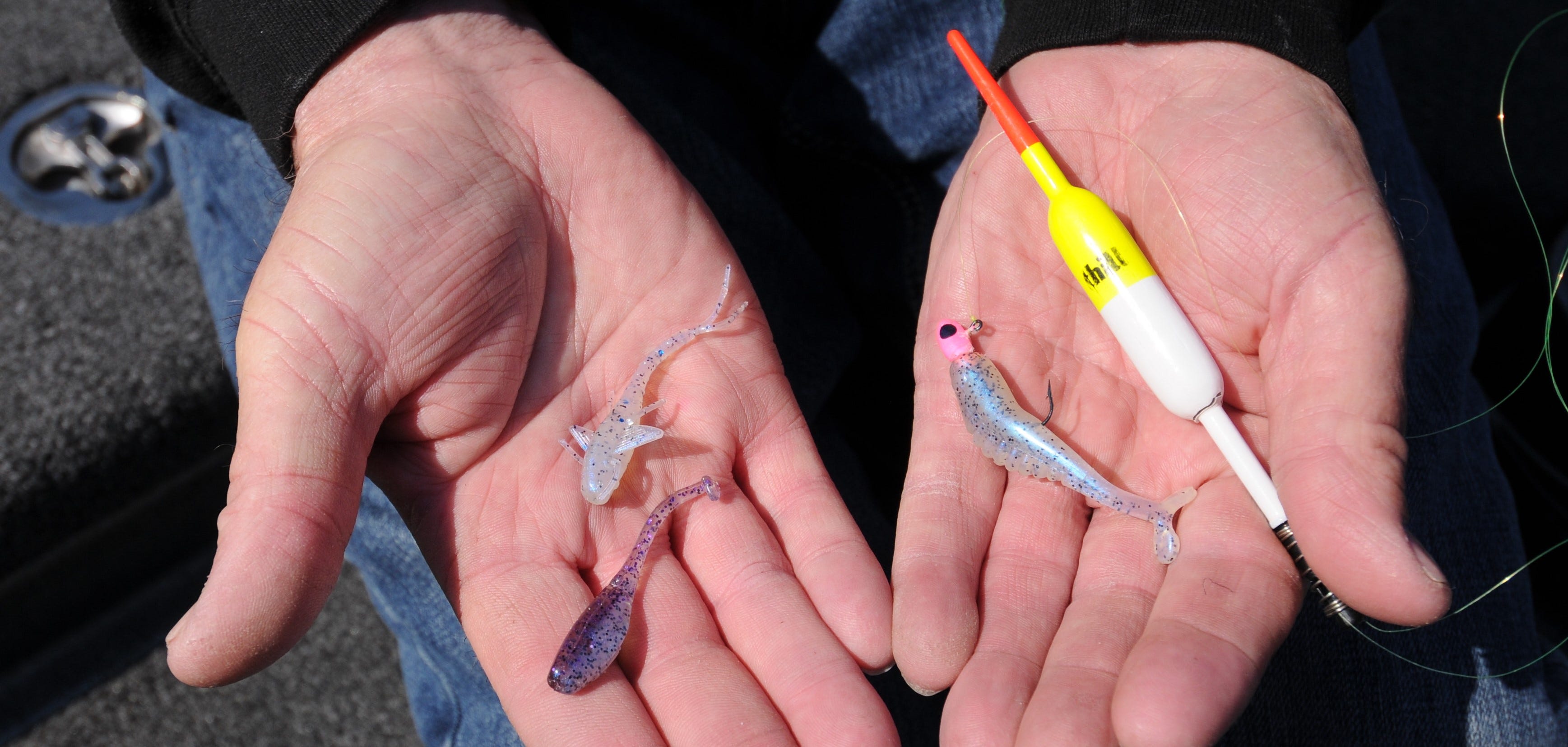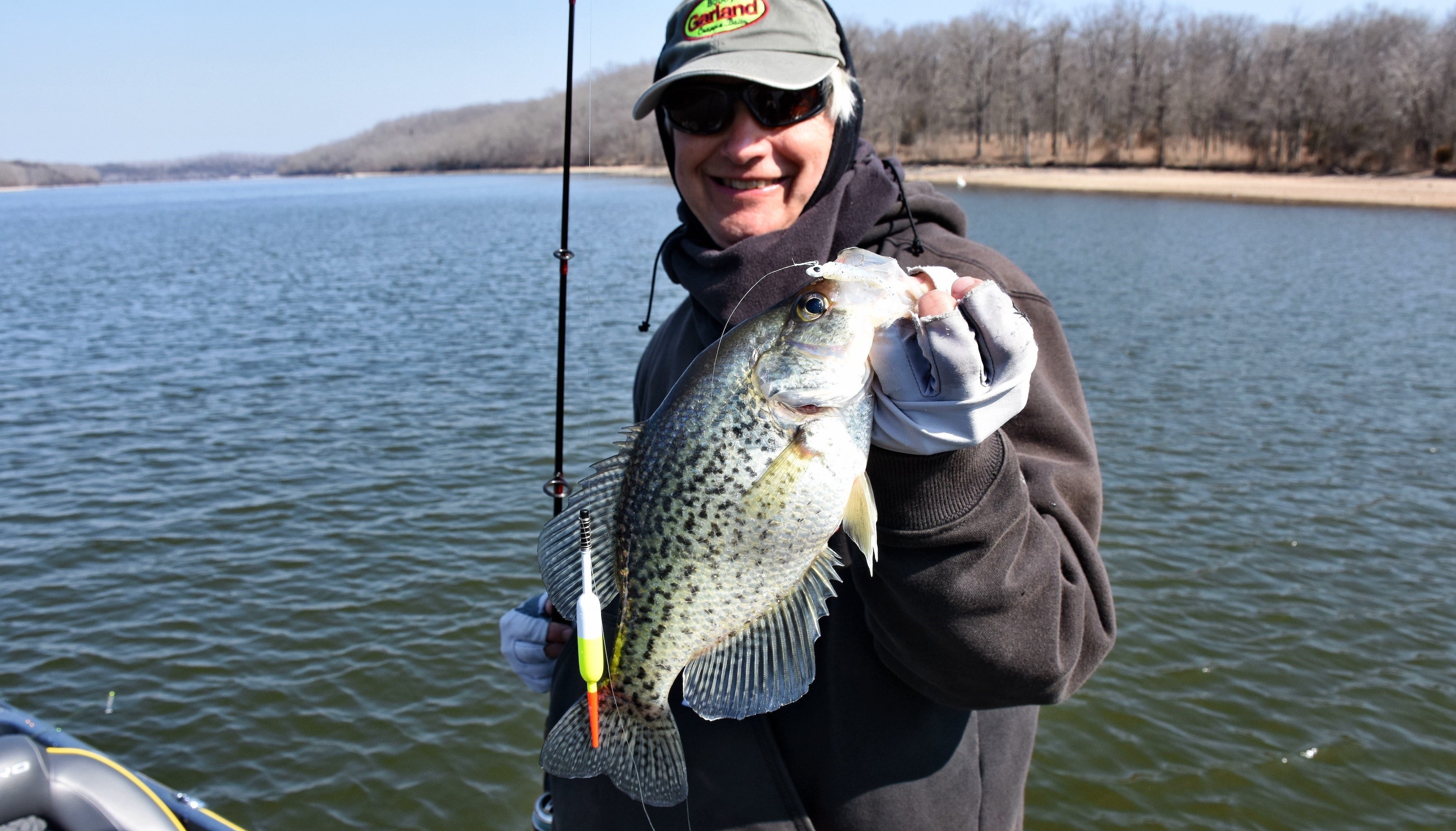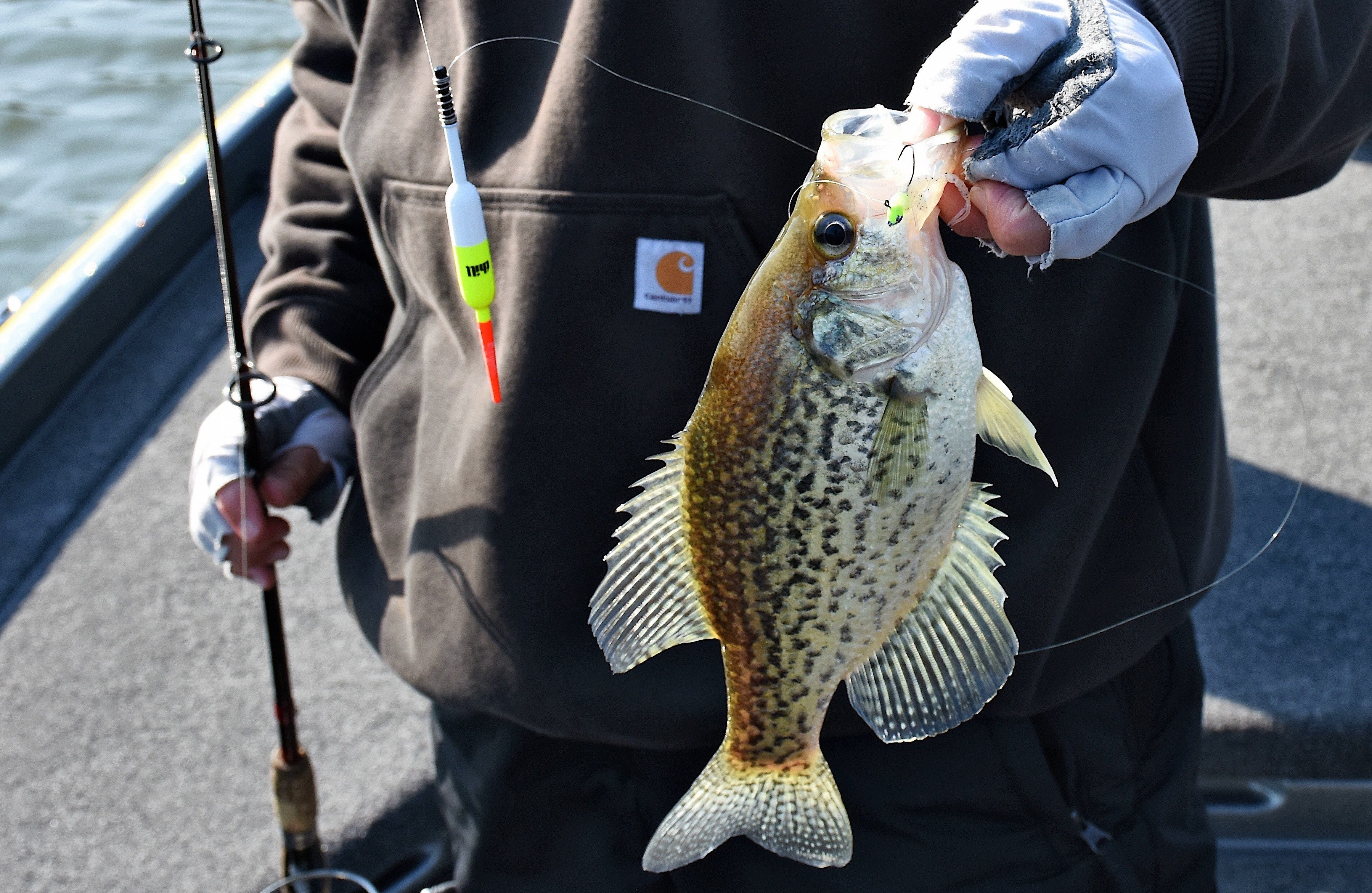- Apr 25, 2022
Pro Bobber Fishing Tactics for Pre-Spawn Crappie
Pre-spawn crappie fishing delivers some of the best action of the year, and the fish’s behavior lends itself ideally to fishing and jig beneath a bobber.
A childhood thrill returns to Terry Blankenship every spring when pre-spawn crappie fishing heats up at Lake of the Ozarks. The Missouri guide and tournament angler recalls how excited he would get watching a bobber zip underwater when he was a kid, bobber fishing for crappie. Blankenship continues to experience that excitement today, albeit with a more sophisticated bobber setup.
“We all love our bobbers,” Blankenship said. “Bobber fishing for crappie is a little bit like topwater fishing for bass. It’s just something, if you have done it a bunch, you are kind of focused on that bobber, and when you are fishing with artificial lures instead of minnows you have to be pretty observant and pretty quick with it. It kind of keeps you a little tense if you feel like you are in a position to get a bite. It winds up being pretty much like the excitement of a topwater bite because of the way crappie sometimes hit it and knock it to where it goes down so fast, but other times they just barely nudge it or turn it sideways. That’s why you really have to pay attention to it.”
Bobber fishing for crappie with artificial lures rather than live bait requires more attention to details. “There is an art to it,” Blankenship said. “The trick to bobber fishing is typically fishing right up above the fish and not letting your bait get below them. When you fish real shallow, crappie really knock it hard because they want to get that bait and turn to get back to the bottom real quick.”
Blankenship has found a bobber and jig highly effective for pre-spawn crappie fishing because it keeps his lure in the strike zone longer. “Male crappie preparing for the spawn are very defensive and a jig just hanging around in one spot is a threat to them,” he said. “They are going to knock that jig out of the way.”
Bobber Setup
Blankenship prefers a fixed bobber over a slip float for prespawn crappie fishing. “A lot of times I am using a light jig, and I am a little concerned with a slip bobber that the jig doesn’t always pull the bobber down all the way to the bobber stop,” Blankenship said. A fixed bobber allows Blankenship’s jig to consistently fall to the same depth.
Blankenship favors either foam weighted bobbers or the fixed spring-style Thill America’s Favorite Float for his prespawn bobber fishing. He prefers bright-colored bobbers that allow him to see the float better at long distances.
The Bobby Garland Crappie Baits Baby Shad is Blankenship’s favorite lure to present beneath a bobber for prespawn crappie. “It is just a natural-looking bait that matches the hatch or the body shape of the shad,” Blankenship said. His favorite Baby Shad colors for bobber tactics include Blue Ice, Monkey Milk and Purple Monkey for clear to slightly stained water and Kiwi or Electric Chicken for dirtier water.
During an early spring outing on Lake of the Ozarks with Blankenship and Bruce Stanton and Gary Dollahon of Bobby Garland, we field tested a new Bobby Garland Bait, the Mayfly, as a stand-alone bait and set below a bobber. The Mayfly/bobber combination produced the majority of the estimated 200 crappie we caught in two days of fishing.
Blankenship matches his baits with a 1/16-ounce jighead for his bobber fishing tactics. “That size jig just doesn’t fall too fast,” he said. “It just has a little bit more action to it whenever it falls at a certain rate.” He never uses a heavier jig because it tends to pull the bobber down too much, but he will occasionally downscale to a 1/32-ounce jig for a slower fall.
A 7-foot, 4-inch medium-light action FX Extreme spinning rod allows Blankenship to easily cast bobbers set as far as 6 feet from his lure. He matches the rod with a Daiwa Procyon 2500 spinning reel spooled with hi-vis yellow 6-pound Vicious Fishing Panfish monofilament line.
Locating Pre-Spawn Crappie


Blankenship targets specific types of areas for pre-spawn crappie fishing. “Typically, the fish will be moving towards some type of spawning bank, which generally are in coves or pockets in coves,” he said. The most productive sections of coves are usually one-quarter to three-quarters back from the main lake. The guide also finds some prespawn crappie in small main-channel cuts featuring 30- to 40-degree banks.
Transition areas are good spots to throw the bobber rig to the bank or in open water along offshore structure. During our outing, we caught crappie close to the bank adjacent to a channel swing and in open water where the crappie were spread out along a flat close to the channel. “We were just in a good migration zone at the time,” Blankenship said.
Blankenship’s Humminbird electronics allow him to pinpoint migrating pre-spawn crappie. “I start out by trying to find crappie on side imaging, and once I locate an area that looks like fish are in, then I can start seeing if the fish are relating to brush or just schooling out in the cove or under docks,” Blankenship said. “Then I will put the (Humminbird) 360 and MEGA Live to work. The 360 will update every few seconds and keep me in line with whatever direction the fish are. Then once I get that lined up, I use MEGA Live to determine how far away they are and how deep they are.”
The MEGA Live feature lets Blankenship determine the depth of the crappie so he can set his bobber above that depth. He suggest anglers who lack forward-scanning electronics should set bobbers at 3 to 4 feet if they know the bottom is 6 feet deep and adjust the bobber depth lower until they get bites.
Bobber presentations


Water and weather conditions determine how Blankenship positions his boat and presents his bobber-and-jig rig. “If the water is clear I will try to stay as far away as I can make a cast,” he said.
Blankenship prefers bobber fishing for crappie in slightly stained water where the fish are less spooky than in clear water. The bobber-and-jig setup works best for clear-water crappie during low light conditions, such as early and late in the day or whenever wind creates a chop on the water.
An artificial lure under a bobber generally requires some imparted movement to trigger a strike. “With a bobber and jig you throw it to the bank and work it back to you,” Blankenship said. “You let the fish kind of tell you if they want you to move it fast or sometimes it is best just to let it sit there for a while. That is hard to do if you don’t know if fish are there, but if you do know there is fish around those males are going to protect that zone. So, if you leave that jig in their zone even though they kind of let it go for a while, eventually they are going to come up and knock it.”
Wind also determines how much movement to add. “A little chop is always good,” Blankenship said. “The wind is your friend most of the time because it keeps the bait moving and kind of keeps the fish looking up.”
On calm days, Blankenship retrieves his bobber rig similar to the walk-the-dog presentation of a Zara Spook. He tries to trigger a reaction strike by twitching his rod a couple of times or quickly reeling in the bobber for a short distance and then stopping his retrieve to let the jig catch up to the float.
Setting the hook


When a crappie pulls his float below the surface, Blankenship sets the hook immediately. He notices many of his clients make the mistake of waiting too long to set the hook.
Another common mistake is leaving too much slack line when bobber fishing. “There are a lot of breezy days when we are out, and any time you are throwing across the wind instead of with the wind it tends to create a lot of slack or arch in your line,” he said. “That keeps you from being able to set the hook good.”
Bobber fishing for pre-spawn crappie has produced some phenomenal days for Blankenship and his clients. “I have seen several days on my guide trips where we have caught 100 fish,” he said. “It gets to the point where some of my clients will get kind of bored because they can’t keep any more fish, but there are other people who just enjoy the catch.”
His clients also get to enjoy Blankenship’s childhood thrill of watching a bobber zip under water.
Bobbers Beyond Pre-Spawn


- Terry Blankenship recommends fishing a jig-and-bobber setup any time crappie are in shallow water.
- Setting a jig 1 to 2 feet below a bobber will catch male crappie protecting nests during the spawn.
- Blankenship will switch to a slip bobber to catch crappie suspended over brush in deeper water during the summer.
- When water temperatures start to cool in the fall, baitfish and crappie move to the shallows where Blankenship throws his bobber-and-jig setup around wood cover.
- Three to five days of warm weather during winter will draw baitfish and crappie to the surface along secondary points. Blankenship can set his jig 1 to 1 1/2 feet below his bobber to catch crappie that have moved into the warmer water column.



